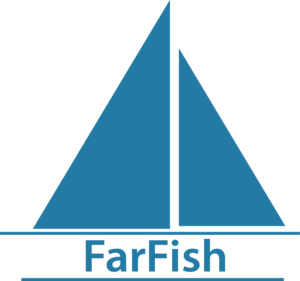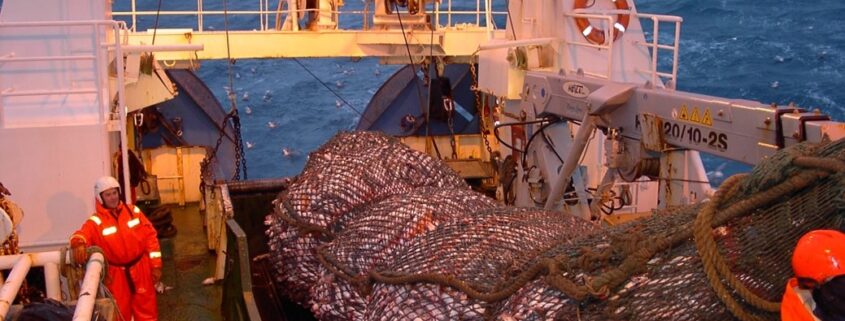Evaluation of the governance structures surrounding the EU long distant fleets fisheries
Among the outputs of the FarFish project is a report that evaluates the governance structures of the EU long-distance fisheries in the six case studies of the FarFish project. These case studies include two high-seas fisheries and four fisheries that are based on Sustainable Fisheries Partnership Agreements (SFPAs) between the EU and coastal states. All these fisheries are important for the fishing fleets of multiple EU countries or respond to the priorities of Regional Fisheries Management Organisations (RFMOs) and the Common Fisheries Policy (CFP). The report focuses on different aspects of both the structural and actor conditions, focusing on monitoring, control, and surveillance (MCS) of the EU external fishing fleet. For each of the four SFPAs, the report presents the requirements set within the SFPAs, the legal framework and systems for MCS in the coastal state and their capacity. For the high-seas cases, the report presents the governing framework of the area where such is in place and the practice of managing the EU fleet. For all cases, challenges of and measures to mitigate by-catch, discard issues, and IUU fishing are presented. Lastly, the main findings on both achievements and identified challenges for the six case studies are summarised.
The full report is available here.
The main conclusions for the SFPA and high-seas fisheries are presented below.
Governance structures in SFPA fisheries
Despite the improved MCS of the EU distant water fishing fleet in recent years, the EU and its Member States have limited capacity to control this fleet. They are to a very high degree dependent on the fleets’ commitment to and compliance with established rules and regulation and the credibility of their self-reporting. In addition, they are also dependent on the MCS capacity of the SFPA partners and instruments of relevant RFMOs.
The SFPAs and accompanying protocol and annexes provide detailed rules and procedures for implementation of the agreements. This includes aspects of the licensing of EU vessels, catch reporting, technical measures, monitoring and control. In some cases, there has been a need for renegotiation (e.g. fishing opportunities and economic contribution in Mauritania) or new issues to be included when negotiating new agreements (e.g. the inclusion of sharks in Cabo Verde). In all the case study countries, institutions and legal framework for MCS of the national and foreign fishing fleets are established. The legislation is improving, where for instance Senegal adopted a new Maritime Fisheries Code in 2015 with the main objective to increase penalties against IUU fishing. Several of the SFPA countries are undergoing administrative reforms and how this will affect the monitoring and control of the fisheries of the foreign fleets remains to be seen.
The coastal states in all case studies face a lack of resources with regards to manpower, technical resources and infrastructure to properly manage and control these fisheries. For instance, Cabo Verde have several patrol vessels and aircrafts, but limited capacity to operate and keep them in operational condition. Several of these vessels have therefore been out of commission for long periods. There is also a general lack of resources to analyse catch data received from the EU fleet.
VMS is required in all the protocols but are not necessarily easily implemented. For example, the VMS of the EU vessels is not compatible with the VMS in Cabo Verde. ERS is also required, but in all the cases, the flag states struggle with the implementation. Therefore, the catch reporting still relies on manual logbooks. In general, the systems for both catch and position reporting are in place. In the cases where the vessels land their catch in ports in the coastal state, instead of bringing it to other ports, the MCS is improved by the SFPA country. In all the cases, more competence and resources are needed to analyse and verify the data collected. All SFPA cases, except for Cabo Verde, take part in an observer programme, either nationally or regionally.
Common for all the cases is that it is difficult to collect data on frequency of inspections and the control coverage. It has also been difficult to distinguish any possible differences between systems in place to monitor and control the national fishing fleet and those related to the foreign fleet through the documents. For this reason, it was difficult to assess whether the controls are adequate or not. In general, there seems to be a lack of resources regarding the controls and they are mainly focused on the national fishing fleet. Expanding the MCS functions to also cover the EU fleet or other foreign vessels is a significant drain on resources, thus complicating the matter of ensuring apt controls. The potential for ensuring adequate controls in the coastal states is considerably better if the catches are either landed or transshipped in a port of the said coastal state.
IUU fishing is an area of concern for all SFPA case studies, though the specific issues differ. In the case of Senegal, the lack of control of artisanal fishing is highlighted, Seychelles emphasizes risks of misreporting linked to the yellowfin quota. All four coastal states have adopted national strategies and plans of actions to combat IUU fishing, either as national initiatives or through regional and/or international cooperation with bodies such as the EU, World Bank or FAO. Examples include ratification of regulations such as the Port State Measures Agreement (PSMA) or through participation in various bodies, such as the Sub-Regional Fisheries Commission (SRFC) in the cases of Cabo Verde, Senegal and Mauritania. IUU touches on several different aspects, and in many instances, controls also must cover issues such as illegal migration, terrorism and piracy as well, further putting a strain on resources.
High seas cases
The high seas fisheries in FAO areas 41 and 47 represents two very different fisheries. While the non-tuna high seas fisheries in FAO area 47 in the South East Atlantic is managed by SEAFO, there is no bi- or multilateral arrangement in place to manage the non-tuna fisheries in the South West Atlantic. Paradoxically, the fisheries are very limited in the SEAFO area and rather extensive in the South West Atlantic. The SEAFO is a well-run and well-structured RFMO, based on modern management principles and with a comprehensive system for MCS. SEAFO has contracting parties that includes the relevant distant water fishing nations and coastal states (except the UK on behalf of their territories in the area). SEAFO, to and increasing degree, cooperates with relevant RFMOs in the area in the fight against IUU fishing and management and enforcement in general. As such, it can function as a model for the situation in the South West Atlantic. In the South West Atlantic, the scientific cooperation between Argentina, Britain and the Falkland Iceland/Malvinas broke down in 2005, and today there are no scientific or other kind of cooperation between the coastal states and distant water fishing nations of which vessels fish in the area (most notably the EU/Spain, China, Taiwan and South Korea). In this situation, relevant flag state should adopt individual management measures for their vessels to ensure the sustainability of the targeted fish stocks and protection of VMEs, in line with international obligations. While all vessels are presumed to report their catches to their flag state, the lack of cooperation on the fisheries in this area and the unilateral measures in place by the EU creates an uneven playing field and a risk of over-harvesting of fish stocks. In the absence of a competent fisheries body and common regulations, a first step to improve the knowledge about this fishery could be to exchange catch and scientific data.




